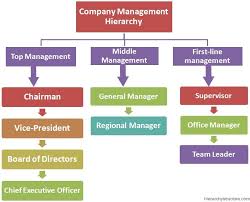BUSN11080 Assignment Sample – Managing Organisational Health 2022
Introduction ( BUSN11080 Assignment Sample – Managing Organisational Health 2022 )
The performance of an organisation is highly dependent on the performance of the individual employees of an organisation. Managing performances of the individual employees within an organisation are highly required in order to increase the performances of an organisation.
The employees within an organisation are required to be motivated in order to perform their tasks in a regular manner. The quality of the job performed by the organisational employees is required to be high so that the products that are being generated by the organisation are high in quality as well. This is going to ensure that the organisations are going to generate high profits from selling their products.
Important factors to be addressed to improve organizational performances
In order to increase the performance of an individual organization, factors that improve the performances of the employees within an organization are required to be focused on and discussed. The employees within an organization are required to be managed in a proper manner so that the employees can provide the organisation with a good amount of work that is high in quality as well (Bellisario and Pavlov, 2018, p. 380).
Different factors that improved the employee performances that are going to help an organization to increase their performances are going to be explained below in a detailed manner.
Employee satisfaction
Employee satisfaction within an organisation is highly important to improve organisational performances. Employees are required to be provided with a workplace atmosphere that is motivating enough for the employees so that the employees can work freely within the organisation.
Workplace toxicity is required to be mitigated. It can be seen that toxicity and arguments within employees of different organisations affect the organisational performances of the employees. The employees are required to be focused on their work and discuss any problem through an effective verbal discussion. Not only this is going to solve any organisational issue but also allows the employees to avoid unrequited toxicity within them which is going to increase the overall peace within an organisation (Raffoni et al. 2018, p. 65).
Employee satisfaction also increases and employees can provide their organisation with a higher amount of products within a particular amount of time. Not only this helps the organisation to meet the deadlines of the products of the company in a faster manner but also allows the clients of the companies to be happy through their performances.
The organisations are required to look into the requirements of their employees and provided employees with their requirements is going to allow the employees to increase the satisfaction level that is going to increase the organisational performance.
Employee motivation
The employees within an organisation are required to be motivated so that the employees perform better within the organisation to increase the organisational performances. Employees within an organization are required to be motivated in the right manner so that the performances of the employees increases as well as enhances. It can be noticed that motivated employees within an organisation produce 21% more products every single day compared to non-motivated employees.
Therefore employee motivation is highly important for an organisation to perform better. Different kinds of factors can act as motivating factors within organisations which are appreciated for the performance, increased wage, a dinner with the boss as gratitude, surprise visits by the boss regarding the performance that has been provided by the employees (Katou, 2017, p. 657). There are mainly three things that are required by an employee and these are either recognition or fame or money or gratitude.
It is required to be looked at which of the aspects are being demanded by an employee and he is required to be awarded that so that the employees are going to be motivated to work within their organisation. This is going to improve the performances of the employees within the organisation and the employees are going to work in a better manner increasing the overall organisational performances.
Health safety of the employees
Health safety requirements of the employees within an organisation are required to be fulfilled so that the employees can work within the organization in a satisfied manner. According to Tajpour et al (2020 ,p. 829), every organization is required to provide their employees with a workplace that provides the employees with health safety so that the chances of accidents are less within the organisation.
This increases the motivation of the employees to work better within an organisation and improve organisational performances. Increasing the health security of the employees within an organization is highly required so that employees feel secure as well as motivated to work within a particular workplace. Less presence of health safety increases the accidents within an industry (Baird et al. 2019, p. 741).
Not only has this impacted the performances of the employees but also within the overall organizational performances. In order to increase organisational performances, health safety within an organization is required to be increased in an efficient manner.

Maslow’s hierarchy of needs
Maslow said that the primary requirement of human beings can mainly be divided into five phases. These requirements are self-actualisation, esteem, love and belonging, safety needs and love and psychological needs. These are the initial requirements of every individual human being and after completion of these five aspects, an individual starts to look for better attributes within life (McDermott et al. 2019, p. 452).
Every organization is required to provide their employees with these five aspects as mentioned by Maslow so that the satisfaction from the work increases amongst the employees. The more workplace satisfaction is going to increase; more is going to be the more employee retention within an organisation which is beneficial for improving the organisational performances.
Capable hierarchy
An organization is required to have a capable hierarchy that is going to be able to manage all functional areas within an organisation. A forth seeing leader is one of the main criteria’s that is required to be present within an organisation so that the organisational performances are going to be handled in a proper manner (Kourti, 2017, p. 250).
The leader is required to understand how the market is going to change along with time and decisions are required to be taken so that organizational production takes a bend according to the changing market demands. Hierarchies are required to manage employees as well as production in an effective manner which is going to be helpful regarding improving organizational performances.
Impact of HR department within an organisation
The HR department within an organisation plays an important role. The HR people are required to have an effective conversation with the clients to secure proper data regarding the delivery of the products. The time required to produce a certain amount of products is going to be required and clients are required to be manipulated in an effective manner so that the required time can be provided by the clients (Jyoti and Rani, 2017, p. 657).
At times if it is noticed that the required time is not being provided by the clients then the HR department is required to have a conversation with the employees within the organization to increase the speed of the work. Maintaining both clients as well as being employed is one of the most effective responsibilities that are going to be taken by the HR department of an organisation.
Marketing and Advertisements
Marketing strategies are required to be implemented so that sales of the products that are being generated within an organisation increases. The marketing team within an organization is required to increase the number of advertisements of their organisations so that a high number of people can know about the products that are being made by an organisation (Nani and Safitri, 2021, p. 220).
Using digital platforms to advertise company products has increased the sales of the products of a company. The marketing team is required to introduce digital marketing so that people can avail the products being created by the company from a digital platform. Social media marketing techniques are required to be focused as it has been noticed that the crowd within the social media platforms like Facebook or Twitter are increasing in a rapid manner.
The marketing team is required to implement strategies to increase the popularity of their organisation through advertising their company within social media platforms (Gawankar et al. 2020, p. 1592). This is going to increase the reach of the company as well as the products that are being made within the company. An increased amount of sales can be achieved through implementing this strategy and this is going to help the company to generate a higher amount of profit from the market. These are going to increase the overall organisational performance.
Conclusion
The performance of an organization is dependent on different factors. Every factor is important in an equal manner and these factors are going to be impactful regarding managing the overall performances that are being made by the organisation. People who are responsible to serve different roles within an organization are required to be careful about their job roles.
This is going to impact an organization in a positive manner improving the overall performances being made by an organisation. The employees are the key to the performance being made by an organisation and therefore the employees are required to be managed in an efficient way. The leaders as well as the hierarchy of an organization are required to be forth seeing enough to understand the upcoming market changes and design proper strategy to generate profits from the market accordingly.
References
Baird, K., Su, S. and Munir, R., 2019. Levers of control, management innovation and organisational performance. Pacific Accounting Review.
Bellisario, A. and Pavlov, A., 2018. Performance management practices in lean manufacturing organizations: a systematic review of research evidence. Production Planning & Control, 29(5), pp.367-385.
Gawankar, S.A., Gunasekaran, A. and Kamble, S., 2020. A study on investments in the big data-driven supply chain, performance measures and organisational performance in Indian retail 4.0 context. International Journal of Production Research, 58(5), pp.1574-1593.
Jyoti, J. and Rani, A., 2017. High performance work system and organisational performance: Role of knowledge management. Personnel Review.
Katou, A.A., 2017. How does human resource management influence organisational performance? An integrative approach-based analysis. International Journal of Productivity and Performance Management.
Kourti, I., 2017. Effective performance management of inter-organisational collaborations through the construction of multiple identities. International Journal of Business Performance Management, 18(2), pp.236-251.
McDermott, A.M., Conway, E., Cafferkey, K., Bosak, J. and Flood, P.C., 2019. Performance management in context: formative cross-functional performance monitoring for improvement and the mediating role of relational coordination in hospitals. The International Journal of Human Resource Management, 30(3), pp.436-456.
Nani, D.A. and Safitri, V.A.D., 2021. Exploring the Relationship between Formal Management Control Systems, Organisational Performance and Innovation: The Role of Leadership Characteristics. Asian Journal of Business and Accounting, 14(1), pp.207-224.
Raffoni, A., Visani, F., Bartolini, M. and Silvi, R., 2018. Business performance analytics: exploring the potential for performance management systems. Production Planning & Control, 29(1), pp.51-67.
Tajpour, M., Hosseini, E. and Salamzadeh, A., 2020. The effect of innovation components on organisational performance: case of the governorate of Golestan Province. International Journal of Public Sector Performance Management, 6(6), pp.817-830.
Know more about UniqueSubmission’s other writing services:


